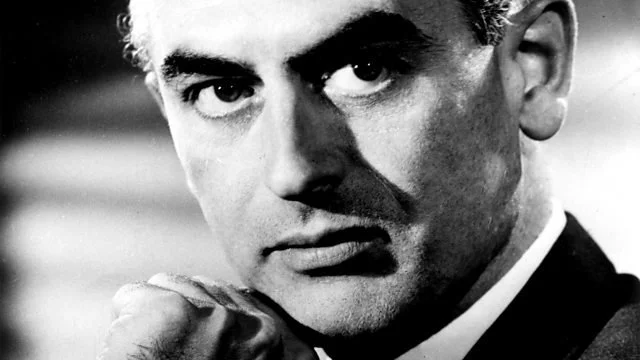The Art of the Soluble: Navigating the Limits of the Observable
The La Jolla Institute for Immunology stands like a modernist fortress on a sun-drenched mesa of San Diego, the sandstone exterior hiding the brilliance within. It was here, on what passes for a cold morning in this part of the world, that I found myself in the office of Dr. Shane Crotty, Chief Scientific Officer and principal investigator to discuss his paper on the immunological memory of SARS-CoV-2, which just happened to be the most cited paper of the pandemic.
Dr. Crotty's office was a testament to his meticulousness as a working scientist: the only clutter to be found was on his dual monitors, flooded with the most recent journal publications and data sets. I was filming Dr. Crotty this day and he may have tidied up his space prior to my arrival but even when I dropped in unannounced Dr. Crotty’s office was never a whirlwind.
I had come armed with a round of philosophical questions, inspired from my recent deep dive into Michael Strevens' "The Knowledge Machine." Camera was speeding and I launched into my interrogation with all the subtlety of a sledgehammer.
"Is what is observable all that matters?" I asked, my voice carrying a hint of challenge that I immediately regretted. Dr. Crotty paused, as he does and looked off but the wry smile that broke through for a moment betrayed a dash of amusement.
"Well Peter Medawar argues in 'The Art of the Soluble' that the art of science lies not just in what we can observe, but in choosing the right problems to solve – problems that are, as he puts it, 'soluble.'"
The interview continued on and I captured what was needed but this new to me title was the gold take away. I needed to read this book. The only copy in San Diego County that I could find online was at Geisel Library over on the UCSD campus. I’d wager there’s a copy in the Salk Institute’s private library which I still havent been blessed to visit. Below ground where the majority of the texts at Geisel live, deep in the stacks I found what I sought, a shockingly petite tome.
In the days that followed, I devoured Medawar's book, its pages becoming a roadmap through the terrain of scientific inquiry. As I read, I found myself thinking back to my childhood, to long summer afternoons spent trying to solve the logic puzzles my father would bring home from magical places.
I remembered the frustration of those early attempts, my small hands twisting brass, pulling string, into ever more chaotic configurations. It wasn't until my father showed me a systematic approach – working backwards from the final solution – that the puzzle began to yield its secrets.
Medawar's concept of "the soluble" resonated with that memory. Just as I had learned to break down the puzzle into manageable steps, so too did scientists need to frame their questions in ways that allowed for incremental progress.
As I delved deeper into the book, I found myself drawing connections to my own work in science communication. How often had I struggled to explain complex concepts, only to realize that I needed to reframe the problem, to find the soluble aspects that could serve as a bridge to understanding?
Of the many things Medawar said one in particular stuck with me: "The purpose of scientific inquiry is not to compile an inventory of factual information, nor to build up a totalitarian world picture of Natural Laws in which every event that is not compulsory is forbidden. We should think of it rather as a logically articulated structure of justifiable beliefs about nature."
I thought about this as I walked across UC San Diego’s campus to return the book, the setting sun painted the sky in hues that defied easy categorization. The world around me was a tapestry of the observable and the inferred, the known and the yet-to-be-discovered.
A group of students hurried past, their conversation a blur of technical terms and laughter. I wondered how many of them had grappled with the questions that now preoccupied me. How many had considered the artistry involved in choosing which problems to pursue?
As I walked back to my bicycle, a sudden gust of wind sent a flurry of leaves spiraling upward. For a moment, they danced in a pattern that seemed almost meaningful, like a code just beyond the edge of comprehension. Then the wind died, and the leaves settled back to earth, their brief moment of apparent order lost to entropy.
The scene brought to mind an old puzzle from my childhood, one that had once seemed as inscrutable as those swirling leaves. It was a tangle of brass and string, a three-dimensional riddle that had confounded me for longer than I care to admit.
Later that night, as I sat at my desk surrounded by notes and open books, I picked up that very puzzle. Its string was now frayed, the brass scratched and scuffed with age. As I absently twisted its elements, I reflected on the journey from that first frustrating encounter to my current understanding of its underlying logic.
Science, I realized, was much the same. It was not merely about observing what was readily apparent, but about developing the tools and perspectives necessary to make the seemingly insoluble soluble. It was about choosing the right questions, framing them in ways that allowed for progress, and always remaining open to the possibility that our current understanding might be upended by the next discovery.
I set the puzzle down, a mix of solved and unsolved sections. Outside my window, the night sky stretched vast and deep, a reminder of how much remained unknown, unobserved, and yet – perhaps – soluble.
